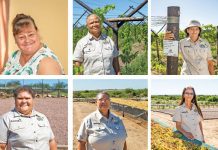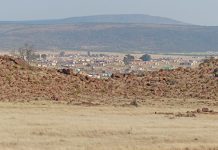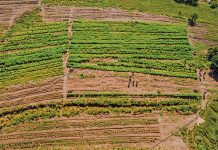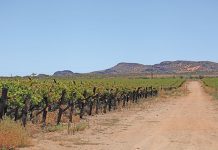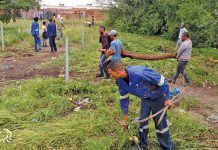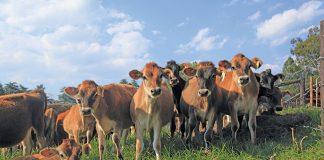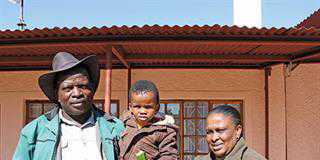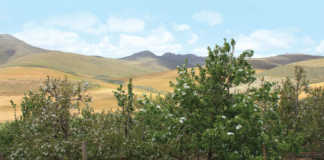As we drive through the village of Bumbane on the outskirts of Keiskammahoek, Fumanekile Ngqokweni – an extension officer from the Eastern Cape agriculture department focusing on development through poultry – says, “People will always love chicken, and here are a lot of people.” A little later I meet Samuel Joka and his wife Zoleka, who are running a successful small-scale broiler operation in the Bumbane village. They are part of a growing network of small-scale broiler growers in the area – now about 15 farmers according to Ngqokweni – representing only one component of the broiler value chain in these rural areas.
The middlemen, usually those owning a vehicle and offering transport services to the community, purchase day-old chicks from farms like Chickrite near East London. These chicks are mostly the Ross variety, according to Ngqokweni, and are sold to growers from as young as two to three weeks old. The growers rear them to about six weeks before selling them live, in small groups or singly, to individual households in large communal villages in the area. Here they are either slaughtered, or fed and resold. “We don’t have a problem with getting rid of our chickens. My chickens are tied up in orders long before even begin selling them,” says Samuel. He is even planning on serious expansion and is determined to double production from 800 to 1 600 chicks. is currently saving money to build a new production area consisting of a large rondavel and a wooden shed.
Contagious success
His success in the area has motivated others to do the same. Nontozonke Joyini from Sophumelela village, who is one of the Joka couple’s former live chicken buyers, began producing her own six-week-old broilers back in 2003. Today she produces about 150 broilers every six weeks. Prices of chickens in the area currently vary from R28 a chicken in cash to up to R40 a chicken on credit. “We can’t keep up with the demand,” Joyini says.
The Jokas first experimented with broilers way back in the 1980s. Financial constraints sunk their business then, but by the mid to late 1990s – thanks to loans from development banks like Uvimba Bank – they began achieving success. Now, after reinvestment and diligent loan repayments, the Jokas are finally reaping the benefits of their small business. They managed to buy a Toyota bakkie to ensure the efficient transport of feed and chicks, effectively cutting out the middleman transporters.
The Jokas’ achievement may seem modest in terms of large-scale broiler production, but it is significant in Keiskammahoek where access to sufficient land is a problem. The couple are able to generate a significant income on less than 1ha. According to Ngqokweni, the Jokas have set an example for others to follow, explaining that other traditional social structures are also suited to broiler production. He says in the Keiskammahoek rural areas the homestead serves as a security base in an area afflicted by rampant stock theft. Broilers farmed at the homestead can therefore be secured on the premises under the watchful eyes of homestead dwellers. “I have no problem with theft,” Samuel admits.
The Jokas’ success recipe
At the end of the day success is linked to the ability to access start-up capital and skills to grow broilers successfully. Samuel stresses the importance of training, as he has also undergone training at the Mpofu Small Stock Training Centre near Fort Beaufort. He advises beginners to start small – say 50 chicks – and build volume along with experience, thereby minimising the risk of initial failure.
Financial challenges
“You can’t do a thing without start-up capital,” says Ngqokweni. According to him access to credit is a major issue – renovating or building adequate buildings and buying equipment like heaters, self-feeders, drinking pans, sawdust, feed and chicks is a significant outlay before you can expect anything back. “For a 100 one-day-old chicks, growers will pay about R440 while 100 broilers can use 10 bags or more of feed through the different phases,” he says. As for government grants, he says that applications are currently bottlenecked and explains that around Keiskammahoek people had to start their businesses through loans from development banks.
Disease control
The management of disease is vital. “Broilers are easily attacked by disease,” says Ngqokweni, who remembers a particularly severe outbreak of Newcastle disease in the area in 2004/05. The Eastern Cape agriculture department offers vaccination regimes for growers if necessary (see box: Suggested vaccination programme). Ngqokweni insists that growers can radically decrease the probability of disease by correct management such as ensuring clean water and the general cleanliness of production areas, as parasitic diseases like coccidiosis are caused by microscopic protozoan parasites called coccidia and spread through contaminated drinking water, food or waste material. He also advises the complete separation of free-range chickens from broilers to minimise the possible spread of disease. Ngqokweni advises the thorough cleaning of pens and the resting of these areas for at least 10 days to combat a build-up of bacteria before a new batch of chicks is introduced into the pens.
Hands-on broiler care
Once funding has been accessed the challenge remains of producing quality six-week-old broilers with a maximum loss of 5% to ensure profitability. “Somebody who is not trained will struggle to do it successfully,” Samuel says. Ngqokweni agrees. “Broilers need to be cared for,” he says. The temperature should be kept at about 30ºC in the first two weeks. After that it can be scaled down depending on the weather. There must be significant circulation of air during hot periods in buildings and holding pens. During cold snaps heat should be generated using heaters and infrared lamps.
Wood shavings should be evenly distributed in the pens, to ensure both cleanliness and the retention of heat. The area where holding pens are built should also have the correct drainage. The Jokas have two structures: a large rondavel with large windows where they rear their chicks up to four weeks, when they are transferred to a long wooden shed fitted with canvas flaps (that can be lifted) and ceiling fans to ensure circulation. This is where they’re kept until sale. Samuel uses Epol feed products and says he generally follows a regular broiler feeding regime (see box: Broiler feeding regime).


